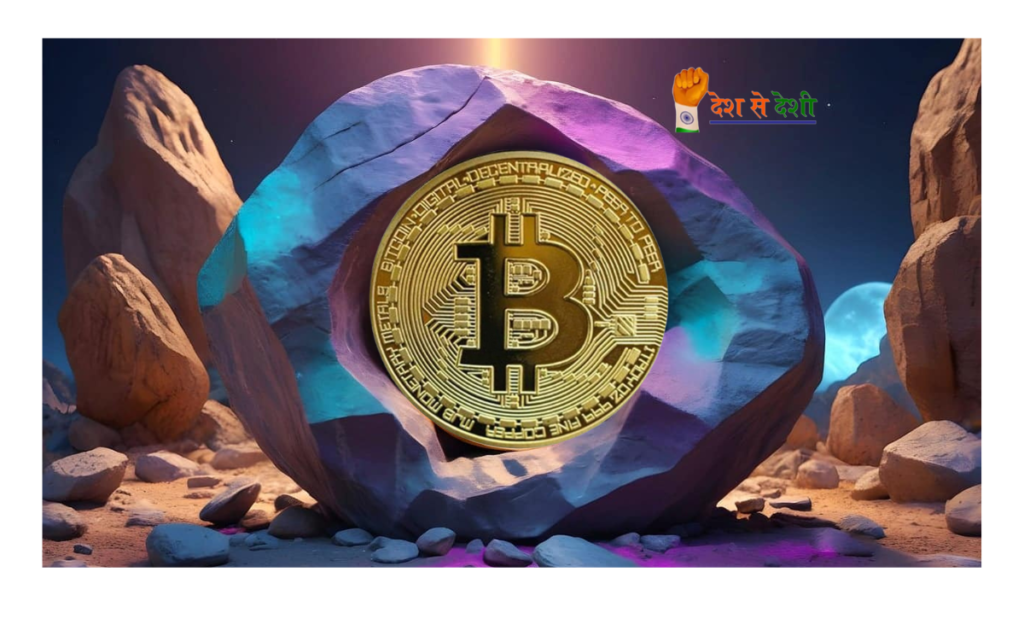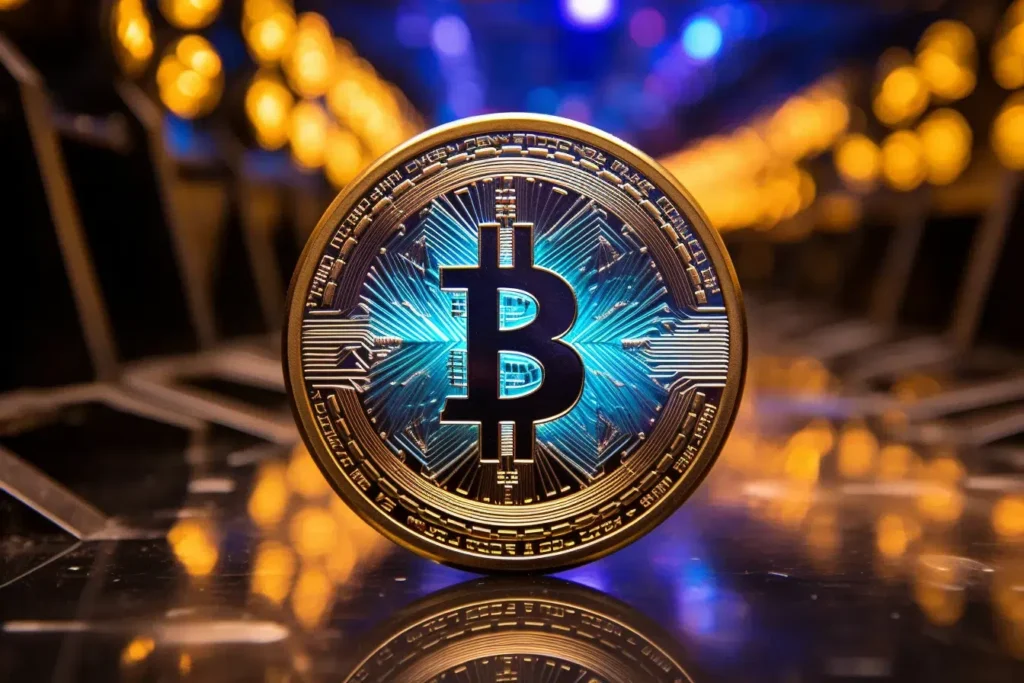In a world increasingly dominated by digital advancements, Bitcoin has emerged as one of the most revolutionary assets of the 21st century. Touted as “digital gold,” it is a decentralized cryptocurrency that operates without the need for traditional banks, governments, or intermediaries. But how exactly does Bitcoin work, and what makes it so unique in comparison to traditional forms of money? In this article, we will break down the underlying technology and concepts that power Bitcoin, unveiling the mechanisms that have made it both a global phenomenon and a financial enigma.
A Digital Revolution
At its core, Bitcoin is a form of digital currency that allows peer-to-peer transactions over the internet. Unlike traditional fiat currencies, such as the US dollar or euro, Bitcoin is not issued or controlled by any central authority like a government or central bank. Instead, it is maintained by a global network of computers that follow a protocol to ensure the integrity and security of transactions. These computers, known as “nodes,” work together to validate transactions and ensure that every Bitcoin transaction is legitimate and secure.

The underlying technology that makes Bitcoin possible is called blockchain, a distributed ledger system that records all Bitcoin transactions across a network of computers. Every time a Bitcoin transaction occurs, it is bundled into a “block” and added to the blockchain, forming a chain of transactions that stretches back to the very first Bitcoin transfer in 2009.
The Blockchain: The Heart of Bitcoin
The blockchain serves as Bitcoin’s public ledger, and it is this decentralized system that provides Bitcoin with its most significant advantage: security. Once a block of transactions is added to the blockchain, it becomes immutable—meaning it cannot be changed or tampered with. This transparency and security are essential for maintaining trust in the Bitcoin network, as anyone can view the entire transaction history, but no one can alter it.

Think of the blockchain as a highly secure, decentralized database that everyone in the Bitcoin network can access. When a new transaction is made, it is broadcasted to the entire network of nodes. The nodes then work together to verify the transaction by solving complex cryptographic puzzles, a process known as “mining.” Once the transaction is confirmed, the new block is added to the chain, and the transaction becomes part of Bitcoin’s immutable history.
Mining: The Digital Gold Rush
Bitcoin mining is the process by which new transactions are validated and added to the blockchain. It’s also the way new Bitcoins are introduced into circulation. However, unlike traditional mining for precious metals, Bitcoin mining is entirely digital. Miners use powerful computers to solve complex mathematical puzzles, which requires substantial computational power. In return for their efforts, miners are rewarded with newly minted Bitcoin.
Mining plays a critical role in ensuring the security and decentralization of the Bitcoin network. As the network grows, so too does the difficulty of the puzzles that miners must solve. This ensures that new blocks are added to the blockchain at a steady rate, with an average of one block being mined every 10 minutes. Over time, the reward for mining decreases in a process called the “halving.” This gradual reduction in rewards ensures that the total supply of Bitcoin is capped at 21 million, which prevents inflation and mimics the scarcity of precious metals like gold.
The Supply Cap: Why Bitcoin is Like Gold
One of the most distinctive features of Bitcoin is its fixed supply. Unlike fiat currencies, which can be printed endlessly by governments, Bitcoin’s total supply is capped at 21 million coins. This finite supply is hardcoded into the Bitcoin protocol and cannot be altered. This scarcity is what has led many to compare Bitcoin to gold, which is also finite in nature.
This limited supply makes Bitcoin a deflationary asset. Over time, as demand for Bitcoin increases and more coins are mined, its scarcity may drive its value higher. Just like how people view gold as a hedge against inflation and economic uncertainty, Bitcoin is often seen as a store of value that is immune to the whims of central banks or governments.
This scarcity aspect has been a key factor in Bitcoin’s rise to prominence. It’s not just a digital currency; it’s a commodity that acts as a hedge against inflation, much like how gold has been regarded for centuries.
Transactions and Wallets: The User Experience
Using Bitcoin to send and receive money is relatively simple, but it requires a basic understanding of how the system works. Bitcoin transactions are made through digital wallets, which are software applications that store your Bitcoin and allow you to send and receive it. Each wallet has two keys: a public key (essentially an address where others can send you Bitcoin) and a private key (which is used to sign transactions and access your Bitcoin).

When you want to send Bitcoin to someone, you simply enter their public key and the amount you wish to send. The transaction is then broadcasted to the Bitcoin network, where it is verified by miners. Once confirmed, the transaction is added to the blockchain, and the recipient’s wallet will reflect the newly received Bitcoin.
What makes Bitcoin unique is that, unlike traditional banking systems where transactions are mediated by banks, Bitcoin transactions are peer-to-peer. This means that transactions can occur directly between individuals without the need for a third party. This feature is especially valuable in regions with limited access to banking services or where traditional financial institutions are unreliable.
Bitcoin’s Decentralized Nature: Power to the People
Perhaps one of the most revolutionary aspects of Bitcoin is its decentralization. Bitcoin operates without any central authority, which means that no single person, institution, or government has control over the network. Instead, Bitcoin relies on a consensus mechanism, where participants in the network work together to validate and secure transactions. This decentralization gives users more control over their money and allows them to transact freely without the restrictions imposed by central banks or financial institutions.
This is especially significant in countries where citizens face government-imposed restrictions on financial transactions or where local currencies are prone to hyperinflation. Bitcoin offers a form of financial freedom and autonomy that was previously unavailable to many individuals.
Also read:$109,000 and Climbing: Bitcoin’s Record-High Rally Continues.
The Future of Bitcoin: Beyond a Store of Value
As Bitcoin continues to mature, many believe it is poised for broader adoption. While it has gained recognition as a store of value, Bitcoin’s potential as a medium of exchange is also starting to materialize. Innovations such as the Lightning Network aim to make Bitcoin transactions faster and cheaper, bringing us closer to the vision of a global decentralized payment system.
While Bitcoin still faces challenges, including regulatory uncertainty and scalability issues, its growing acceptance by mainstream financial institutions, investors, and individuals suggests that it’s more than just a passing trend. Whether it becomes the future of money or remains an alternative investment, one thing is clear: Bitcoin has forever changed the way we think about money.
As we continue to navigate the digital age, Bitcoin’s rise offers a glimpse into a future where traditional financial systems are reimagined. The world of digital gold is still unfolding, and its story is far from over.




